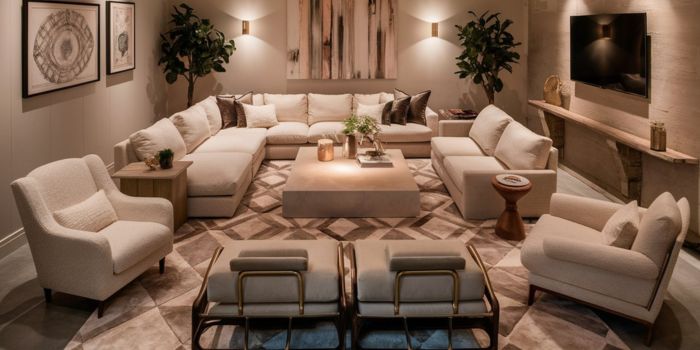Welcome to a world of fresh living room furniture arrangement ideas, where every piece finds its perfect place! Choosing the right layout can make your space feel both stylish and welcoming, helping you create a room that’s ideal for everything from entertaining guests to cozy nights in.
With clever design tips, you’ll effortlessly blend aesthetics with function, crafting a living room that complements your lifestyle and makes the most of your space—no matter the size.
Imagine a layout that seamlessly balances comfort and style, tailored to your unique taste. Whether you’re looking to open up your room, add cozy conversation areas, or maximize seating options, our guide offers inspired ideas that fit every type of home.
Dive into the secrets of smart furniture placement and bring a renewed sense of harmony to your living room today. Don’t wait—click through and start creating a space that feels like the perfect extension of you
1. The Cozy Conversation Pit

Creating a cozy conversation pit is perfect for fostering interaction among guests. To achieve this, place a large sectional sofa in the center of the room, facing inward. Surround it with accent chairs or ottomans to create a circular or semi-circular arrangement.
This setup encourages face-to-face conversations, making it ideal for gatherings. A round coffee table at the center serves as a functional focal point, allowing easy access to drinks and snacks. To enhance the ambiance, consider adding floor lamps or table lamps in the corners for warm lighting.
This layout works well in medium to large spaces and can be adapted with various styles of furniture, from modern to traditional, ensuring that it reflects your personal taste while promoting a friendly atmosphere.
2. The U-Shaped Layout
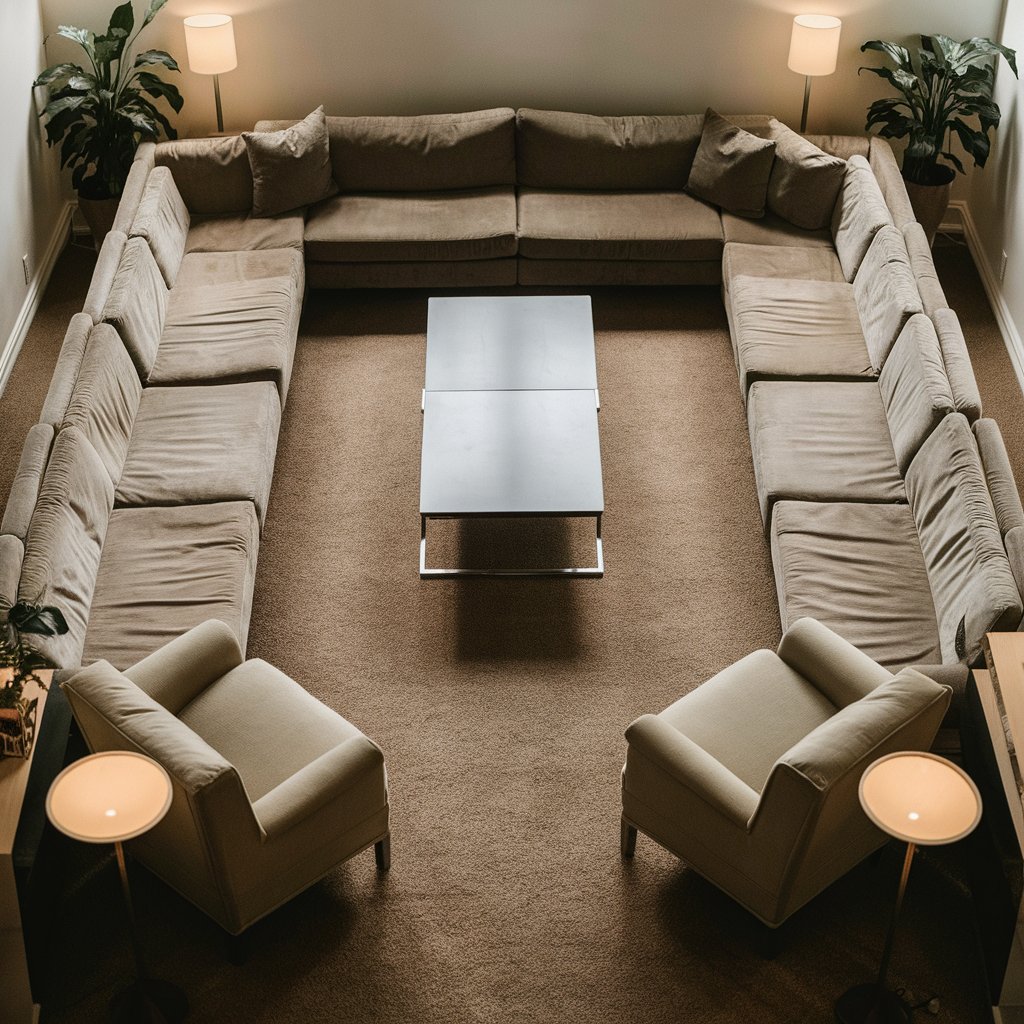
The U-shaped layout is another excellent option for maximizing seating while maintaining an open feel. Position a long sofa along one wall and flank it with two chairs on either side, forming a “U” shape.
This arrangement not only creates a defined seating area but also allows for easy movement throughout the room. It’s particularly effective for larger living rooms where you want to encourage conversation without feeling cramped.
You can add a coffee table in the center and perhaps a side table next to each chair for added convenience. This layout is versatile and can accommodate various activities, from watching TV to hosting game nights, making it suitable for families and social gatherings alike.
3. The Symmetrical Approach
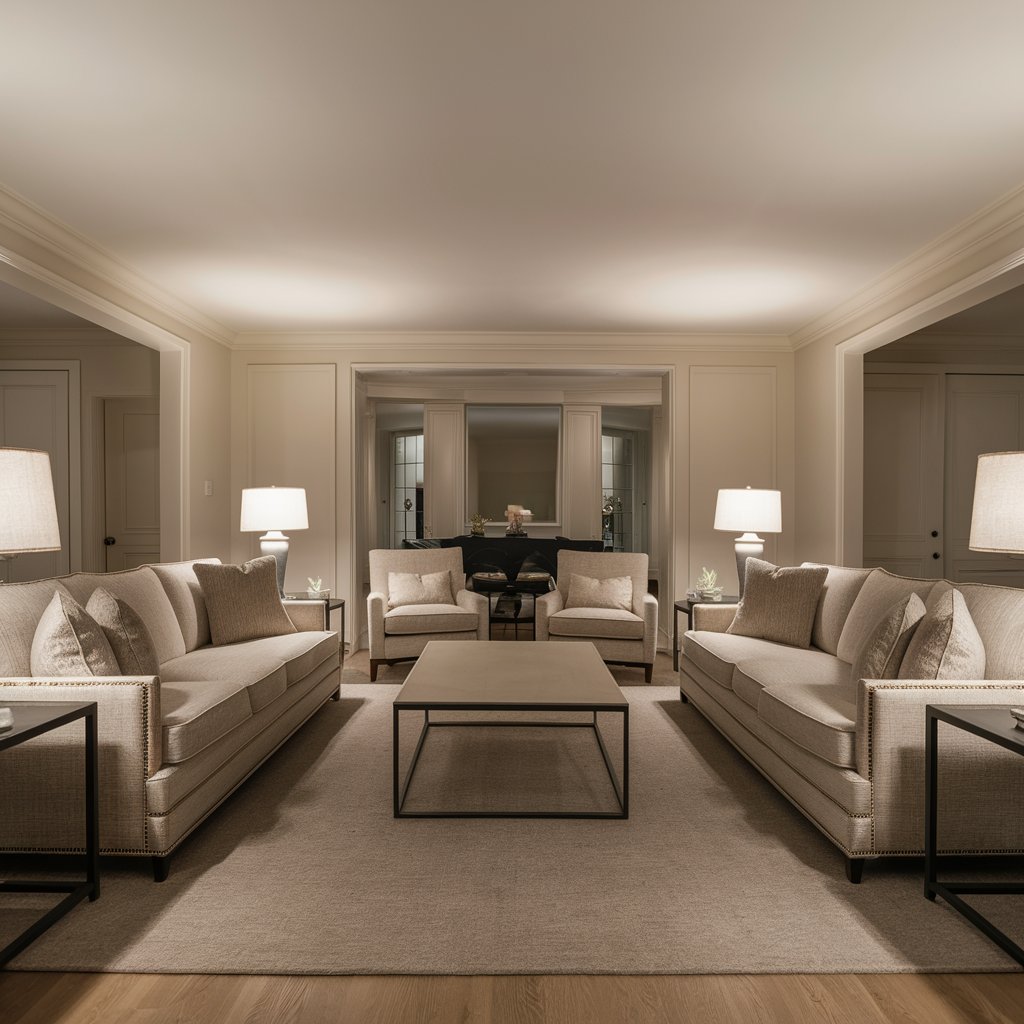
For those who appreciate balance and symmetry, arranging two identical sofas facing each other creates an elegant and formal atmosphere. This layout is particularly suited for larger living rooms where space allows for multiple seating options without overcrowding.
Place a coffee table in between the sofas to anchor the arrangement and create a central focal point. Adding accent chairs or side tables on either end can enhance functionality while maintaining visual harmony.
This setup works well in traditional or contemporary settings, providing ample seating for entertaining guests while promoting an inviting ambiance.
4. The L-Shaped Arrangement

An L-shaped arrangement is ideal for smaller spaces or rooms with awkward layouts. Position a sofa against one wall and an armchair or loveseat adjacent to it, forming an “L” shape that opens up the room.
This setup allows for efficient use of space while still providing comfortable seating options for conversations or relaxation.
Consider placing a coffee table in front of the sofa and adding decorative elements like plants or bookshelves along the walls to enhance the aesthetic appeal. This arrangement not only maximizes seating but also creates a cozy nook that feels intimate yet spacious.
5. The Angled Seating Configuration
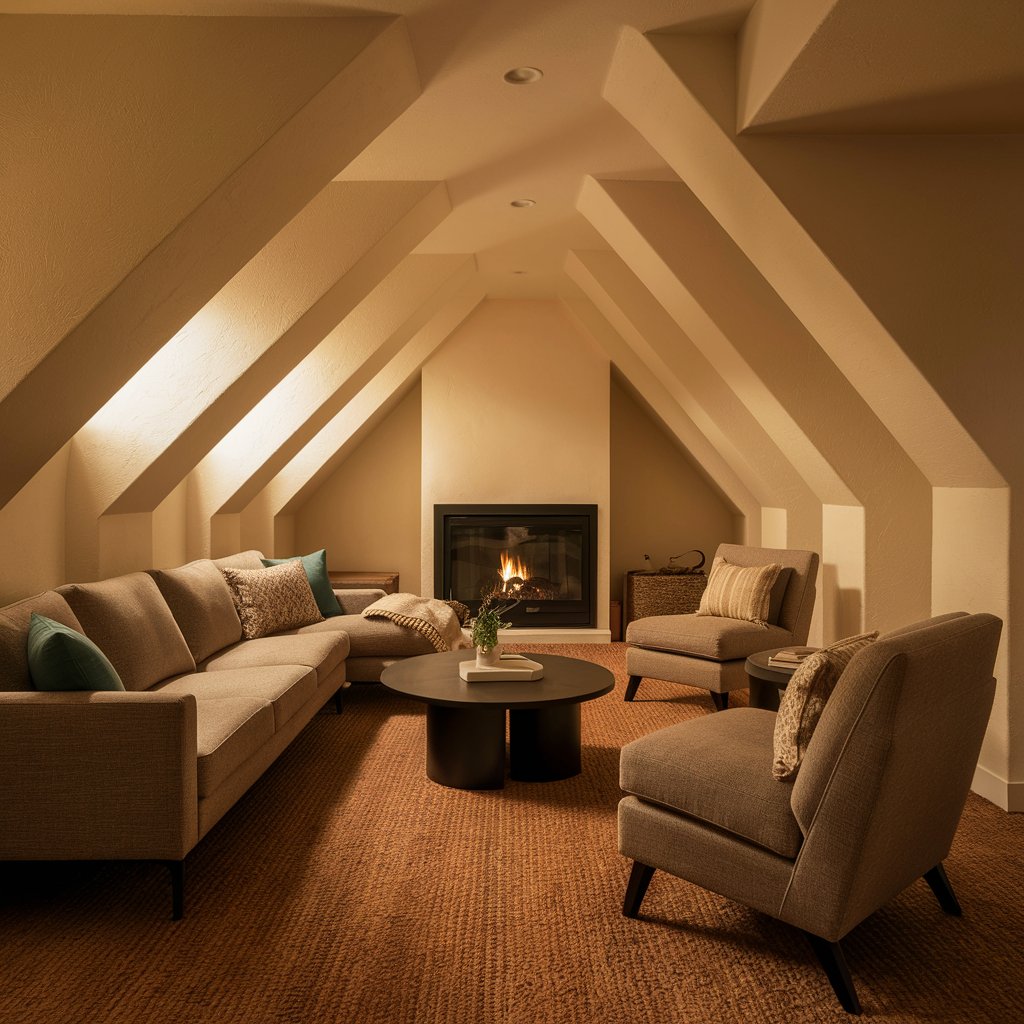
If you want to add visual interest to your living room, try an angled seating configuration. Position your sofa at an angle rather than parallel to the walls, which can create a dynamic flow in the space. Place accent chairs opposite the sofa at complementary angles to enhance this look.
This arrangement works particularly well in rooms with unique architectural features like fireplaces or large windows, as it draws attention to these elements while encouraging conversation among guests. A round coffee table at the center can soften the angles and provide functionality without overwhelming the space.
6. The Floating Sofa Concept
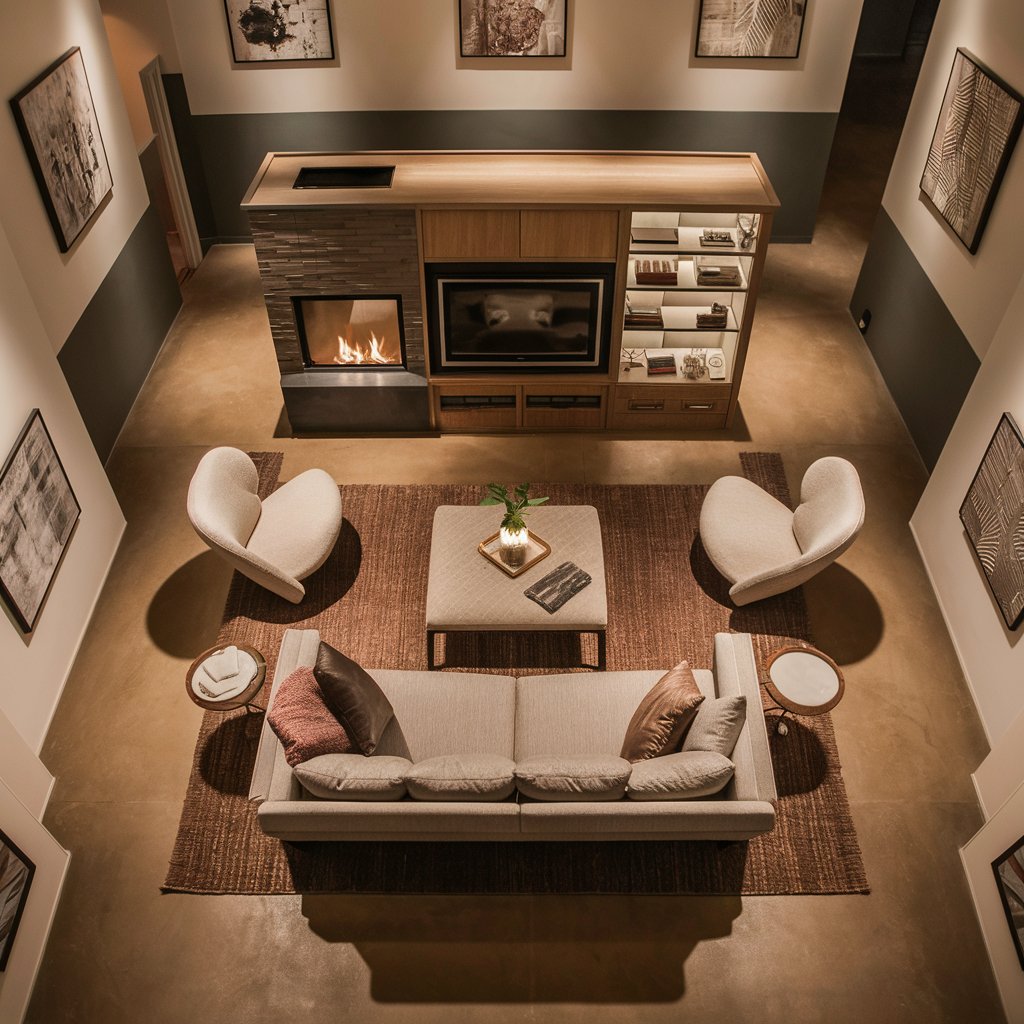
For those looking to maximize space in smaller living rooms, consider using a floating sofa arrangement. Instead of pushing all furniture against the walls, place your sofa in the center of the room, facing a focal point like a fireplace or TV unit.
This layout creates distinct areas within an open floor plan and promotes better traffic flow throughout the space. Pair it with chairs that can be easily moved around as needed, allowing flexibility for different activities or gatherings. By keeping pathways clear around the furniture, you create an airy feel that makes even small spaces feel larger
7. The Multi-Functional Zone
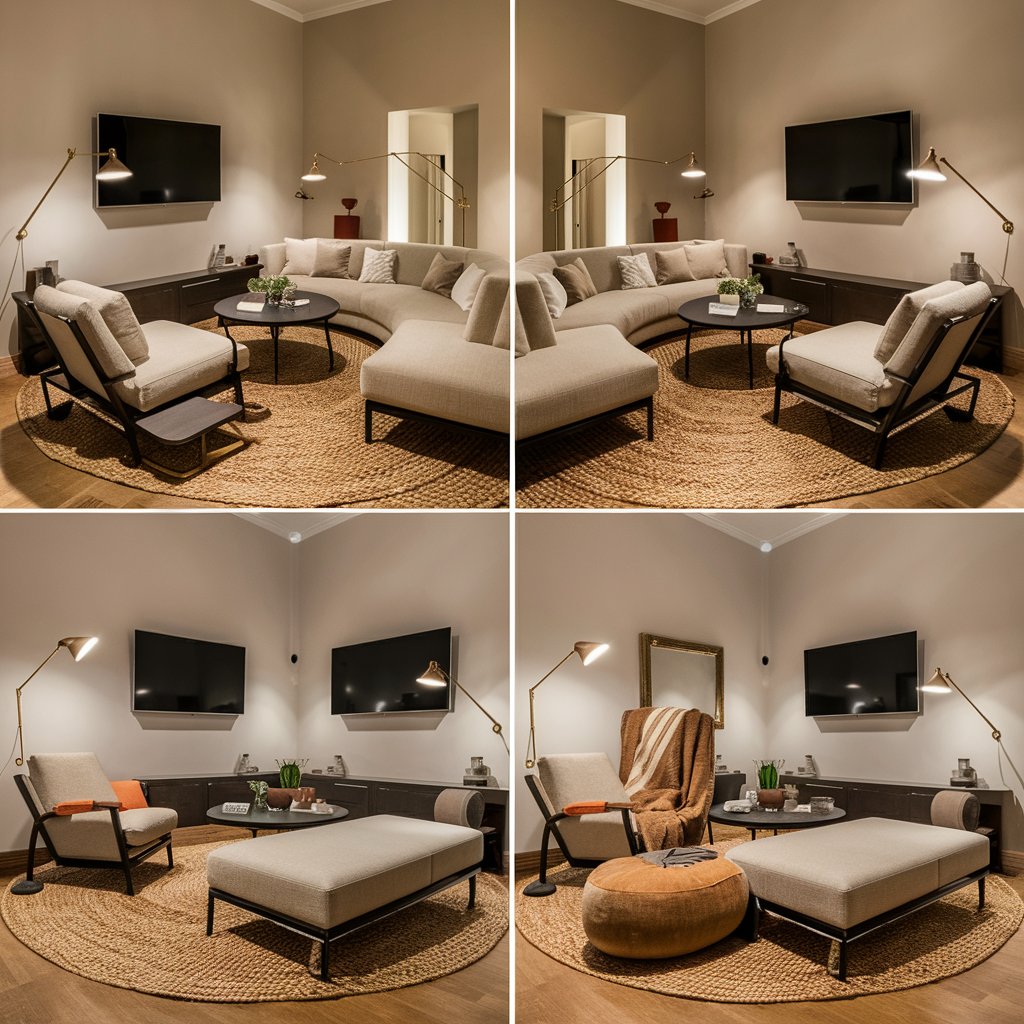
In modern homes where space is often limited, creating multi-functional zones is essential. Arrange your furniture so that different areas serve multiple purposes; for example, position your sofa facing both the TV and a reading nook with a chair and lamp nearby.
Use ottomans that can double as storage or extra seating when needed. This layout not only maximizes utility but also keeps your living room organized and clutter-free. Consider using rugs to define each area visually while maintaining cohesion in style throughout the space.
8. The Entertainment Hub
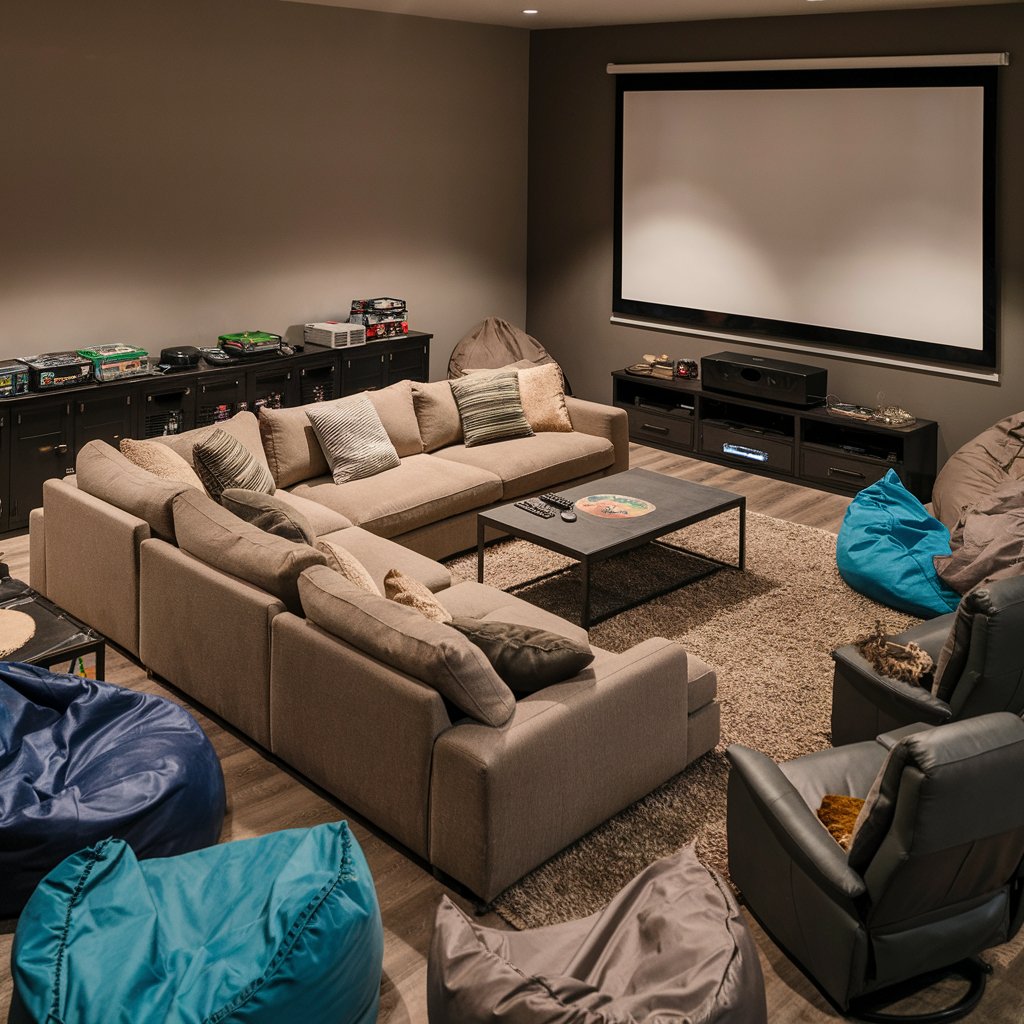
If your living room is primarily used for entertainment, focus on creating an entertainment hub layout. Position your sofa directly facing your TV unit or projector screen, ensuring optimal viewing angles from all seats in the room.
Flank your sofa with additional seating options like recliners or bean bags to accommodate larger groups during movie nights or game days. A console table behind the sofa can provide extra storage for games and remotes while keeping everything within reach without cluttering surfaces.
9. The Open-Concept Flow
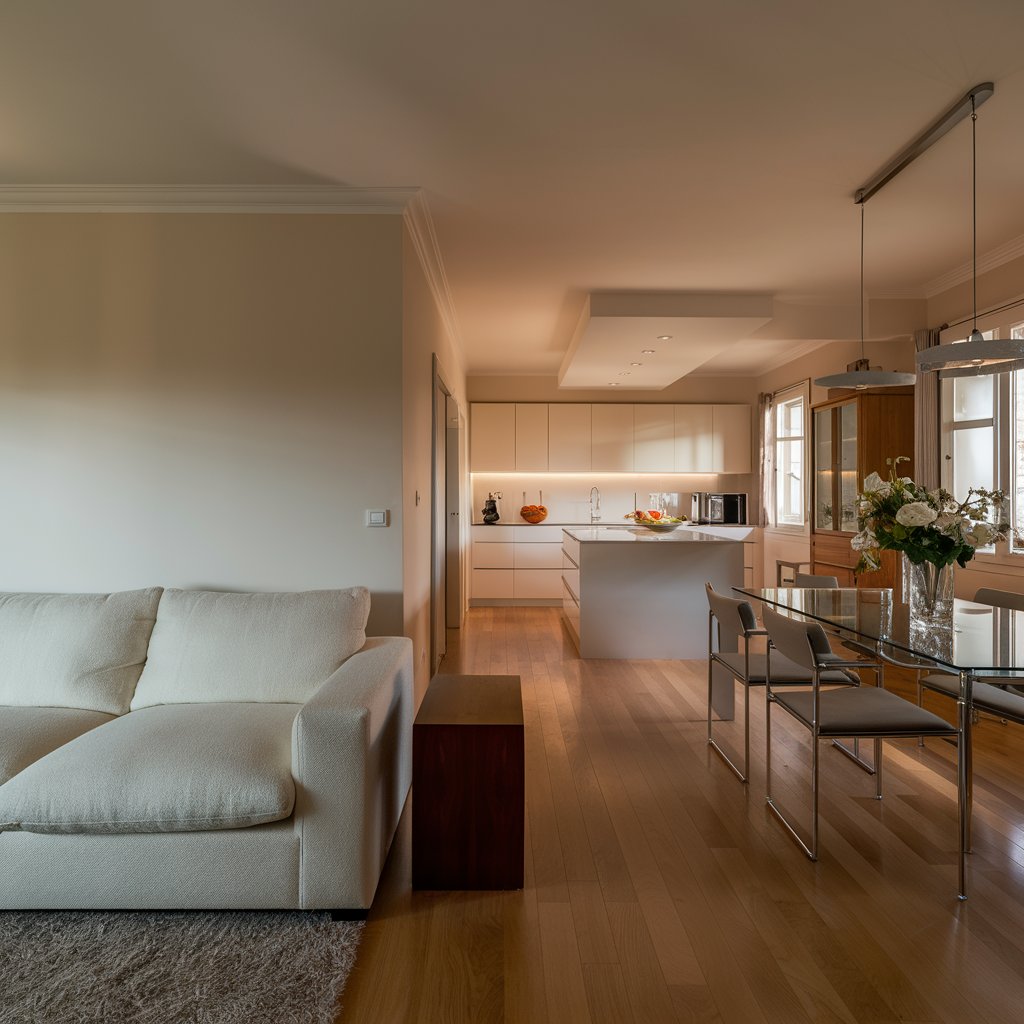
In open-concept homes, maintaining a seamless flow between spaces is key to achieving a cohesive and functional design.
Thoughtful furniture placement can help create natural boundaries without erecting barriers or obstructing the open, airy feel of the space.
In the living room, positioning the sofa slightly away from the walls can help define the area as a distinct yet connected zone, offering a sense of structure while still preserving an open line of sight. This setup encourages movement throughout the space without creating visual or physical blockages.
To further enhance flow, consider adding versatile furniture pieces like side tables, console tables, or open shelving that act as subtle transitions between areas, such as the living and dining spaces.
These elements can serve as functional pieces for storage or display while gently guiding the eye from one section of the room to another.
Choosing furniture with clean lines and low profiles can also keep sightlines unobstructed, reinforcing the openness that defines open-concept designs. This approach brings cohesion to the layout, creating an inviting, spacious feel that seamlessly connects different functional areas.
10. The Cozy Nook

Creating a cozy nook in your living room can be a delightful escape within your home, offering a peaceful haven for relaxation, reading, or enjoying a warm drink.
Start by selecting a corner or area near a window where natural light can flood in, adding to the ambiance. Place a comfortable armchair or cushioned lounge chair there, choosing one with soft upholstery that invites you to settle in and unwind.
To enhance the cozy atmosphere, incorporate a small side table within arm’s reach, perfect for holding a book, cup of coffee, or a small decorative item like a candle or potted plant. Add layers of comfort with plush throw blankets and a selection of pillows in varying textures—think velvets, knits, or faux fur.
To make the nook truly your own, consider a floor lamp with a warm-toned bulb or even string lights to create a soft glow in the evening. This thoughtfully arranged corner becomes a space to retreat to, offering a sense of serenity and a place to relax within your larger, more dynamic living room.
11. The Minimalist Approach
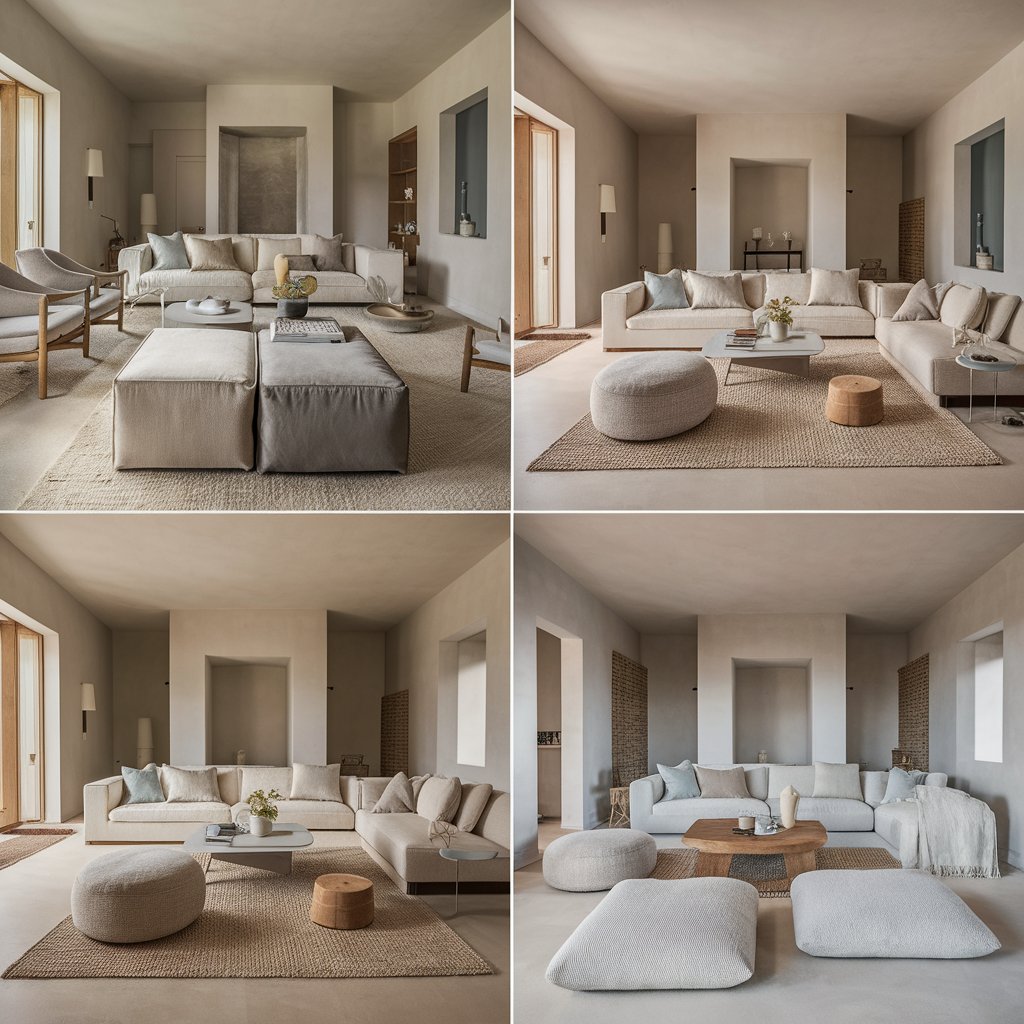
Embracing a minimalist approach can truly transform your living room into a spacious, serene haven. The mantra of “less is more” works wonders in creating a balanced, calming atmosphere.
Start by selecting just a few key pieces of furniture, focusing on items that offer multifunctional benefits. For instance, an ottoman that doubles as storage is both practical and in line with minimalist design principles. Choose a comfortable, streamlined sofa as a focal point, while avoiding excessive decorative pieces or oversized furniture.
Stick to a neutral color palette, such as shades of white, beige, gray, or soft pastels, to create a cohesive look and allow natural light to flow more freely, enhancing the sense of space. When arranging furniture, pay attention to negative space; this empty space around and between objects prevents visual clutter and gives the room a light, airy feel.
Add texture through materials like natural wood, light linen, or subtle woven textiles to keep the design interesting yet understated. Minimalism encourages intentionality in decor—each item should have purpose and value, creating a refined, restful ambiance.
12. The Family-Friendly Layout
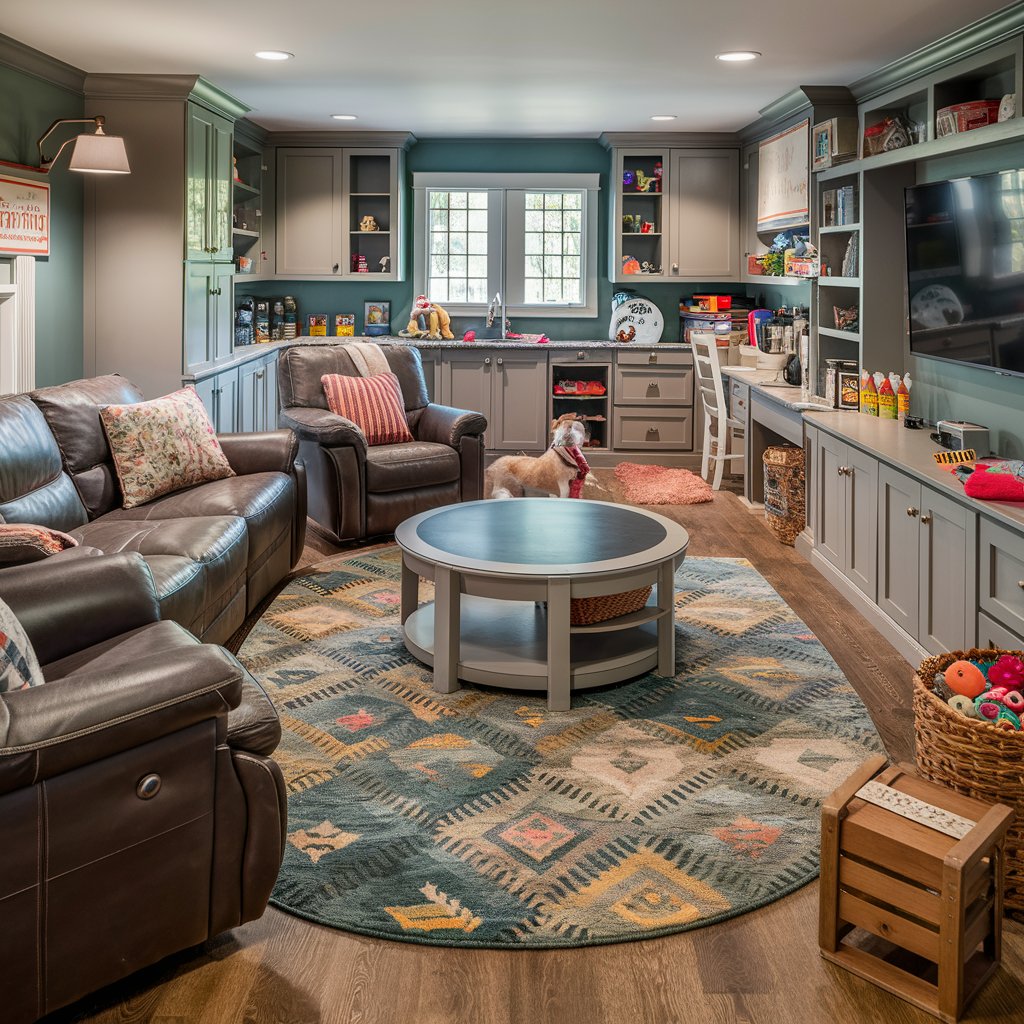
Creating a family-friendly layout requires thoughtful consideration of both safety and functionality. When arranging furniture, start with materials that withstand wear and tear; leather or durable fabric sofas are excellent choices as they’re resilient to spills and scratches.
Complement these with washable or stain-resistant rugs, ensuring that cleanup is a breeze after playtime or pet activities. It’s helpful to place larger, heavier furniture like sofas or bookshelves against walls, which opens up floor space for play areas and makes the room feel more spacious.
Safety is key, especially with children or pets in the home. Avoid pieces with sharp edges, opting for rounded tables or adding edge protectors.
Storage is another essential aspect of a family-friendly layout. Consider storage ottomans, wall-mounted shelves, or built-in cabinets to keep toys, pet supplies, and other essentials neatly tucked away, reducing clutter and making it easy to keep the space organized.
Lastly, arrange the seating so that everyone has a clear line of sight, creating a cozy, inviting atmosphere where family members can engage and enjoy time together.
Benefits of Living Room Furniture Arrangement Ideas
- Enhances space utilization
- Improves traffic flow
- Creates a focal point
- Increases comfort and functionality
- Encourages social interaction
- Reflects personal style
- Maximizes natural light
- Facilitates better organization
- Allows for versatile layouts
- Supports different activities (e.g., reading, entertaining)
Conclusion
Arranging living room furniture effectively is key to creating a space that feels both welcoming and functional. Start by establishing a focal point, such as a fireplace or entertainment center, and arrange seating to encourage interaction and comfort.
Consider the room’s flow, ensuring clear pathways for movement. Mix various seating options, like sofas, armchairs, and ottomans, for flexibility and balance. Adding accent pieces such as side tables, rugs, and lighting enhances the room’s character and warmth.
Remember, functionality and aesthetic appeal should guide your layout decisions. By keeping these principles in mind, you can craft a living room that harmonizes style and comfort, making it a favorite spot for relaxation and socializing.

